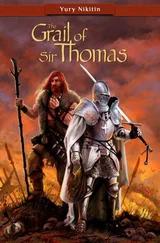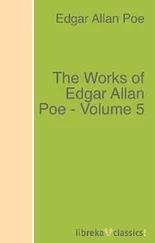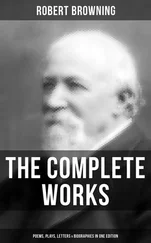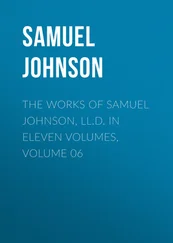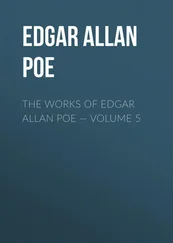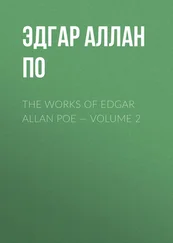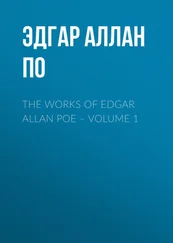Thomas Browne - The Works of Sir Thomas Browne, Volume 3
Здесь есть возможность читать онлайн «Thomas Browne - The Works of Sir Thomas Browne, Volume 3» — ознакомительный отрывок электронной книги совершенно бесплатно, а после прочтения отрывка купить полную версию. В некоторых случаях можно слушать аудио, скачать через торрент в формате fb2 и присутствует краткое содержание. ISBN: , Жанр: foreign_antique, foreign_prose, на английском языке. Описание произведения, (предисловие) а так же отзывы посетителей доступны на портале библиотеки ЛибКат.
- Название:The Works of Sir Thomas Browne, Volume 3
- Автор:
- Жанр:
- Год:неизвестен
- ISBN:http://www.gutenberg.org/ebooks/39962
- Рейтинг книги:4 / 5. Голосов: 1
-
Избранное:Добавить в избранное
- Отзывы:
-
Ваша оценка:
- 80
- 1
- 2
- 3
- 4
- 5
The Works of Sir Thomas Browne, Volume 3: краткое содержание, описание и аннотация
Предлагаем к чтению аннотацию, описание, краткое содержание или предисловие (зависит от того, что написал сам автор книги «The Works of Sir Thomas Browne, Volume 3»). Если вы не нашли необходимую информацию о книге — напишите в комментариях, мы постараемся отыскать её.
The Works of Sir Thomas Browne, Volume 3 — читать онлайн ознакомительный отрывок
Ниже представлен текст книги, разбитый по страницам. Система сохранения места последней прочитанной страницы, позволяет с удобством читать онлайн бесплатно книгу «The Works of Sir Thomas Browne, Volume 3», без необходимости каждый раз заново искать на чём Вы остановились. Поставьте закладку, и сможете в любой момент перейти на страницу, на которой закончили чтение.
Интервал:
Закладка:
No Lamps, included Liquors, Lachrymatories, or Tear-Bottles attended these rural Urnes, either as sacred unto the Manes , or passionate expressions of their surviving friends. While with rich flames, and hired teares they solemnized their Obsequies, and in the most lamented Monuments made one part of their Inscriptions. 41Some finde sepulchral Vessels containing liquors, which time hath incrassated into gellies. For beside these Lachrymatories, notable Lamps, with Vessels of Oyles and Aromatical Liquors attended noble Ossuaries. And some yet retaining a Vinosity[ 42and spirit in them, which if any have tasted they have far exceeded the Palats of Antiquity. Liquors not to be computed by years of annual Magistrates, but by great conjunctions and the fatal periods of Kingdoms. 43The draughts of Consulary date, were but crude unto these, and Opimian 44Wine but in the muste unto them.
In sundry graves and Sepulchres, we meet with Rings, Coynes, and Chalices; Ancient frugality was so severe, that they allowed no gold to attend the Corps, but onely that which served to fasten their teeth. 45Whether the Opaline stone in this Urne were burnt upon the finger of the dead, or cast into the fire by some affectionate friend, it will consist with either custome. But other incinerable substances were found so fresh, that they could feel no sindge from fire. These upon view were judged to be wood, but sinking in water and tried by the fire, we found them to be bone or Ivory. In their hardnesse and yellow colour they most resembled Box, which in old expressions found the Epithete 46of Eternal, and perhaps in such conservatories might have passed uncorrupted.
That Bay-leaves were found green in the Tomb of S. Humbert , 47after an hundred and fifty yeers, was looked upon as miraculous. Remarkable it was unto old Spectators, that the Cypresse of the Temple of Diana , lasted so many hundred years: The wood of the Ark and Olive Rod of Aaron were older at the Captivity. But the Cypresse of the Ark of Noah , was the greatest vegetable Antiquity, if Josephus were not deceived, by some fragments of it in his dayes. To omit the Moore-logs, and Firre-trees found underground in some parts of England ; the undated ruines of winds, flouds or earthquakes; and which in Flanders still shew from what quarter they fell, as generally lying in the North-East position. 48
But though we found not these peeces to be Wood, according to first apprehension, yet we missed not altogether of some woody substance; for the bones were not so clearly pickt, but some coals were found amongst them; A way to make wood perpetual, and a fit associat for metal, whereon was laid the foundation of the great Ephesian Temple, and which were made the lasting tests of old boundaries, and Landmarks; Whilest we look on these we admire not observations of Coals found fresh, after four hundred years. 49In a long deserted habitation, 50even Egge-shels have been found fresh, not tending to corruption.
In the Monument of King Childerick , the Iron Reliques were found all rusty and crumbling into peeces. But our little Iron pins which fastened the ivory works, held well together, and lost not their Magneticall quality, though wanting a tenacious moisture for the firmer union of parts, although it be hardly drawn into fusion, yet that metal soon submitteth unto rust and dissolution. In the brazen peeces we admired not the duration but the freedom from rust, and ill savour; upon the hardest attrition, but now exposed unto the piercing Atomes of aire; in the space of a few moneths, they begin to spot and betray their green entrals. We conceive not these Urns to have descended thus naked as they appear, or to have entred their graves without the old habit of flowers. The Urne of Philopœmen was so laden with flowers and ribbons, that it afforded no sight of it self. The rigid Lycurgus allowed Olive and Myrtle. The Athenians might fairely except against the practise of Democritus to be buried up in honey; as fearing to embezzle a great commodity of their Countrey, and the best of that kinde in Europe . But Plato seemed too frugally politick, who allowed no larger monument then would contain four Heroick verses, and designed the most barren ground for sepulture: Though we cannot commend the goodnesse of that sepulchral ground, which was set at no higher rate then the mean salary of Judas . Though the earth had confounded the ashes of these Ossuaries, yet the bones were so smartly burnt, that some thin plates of brasse were found half melted among them: whereby we apprehended they were not of the meanest carcasses, perfunctorily fired as sometimes in military, and commonly in pestilence, burnings; or after the manner of abject corps, hudled forth and carelessly burnt, without the Esquiline Port at Rome ; which was an affront continued upon Tiberius , while they but half burnt his body, 51and in the Amphitheatre, according to the custome in notable Malefactors; whereas Nero seemed not so much to fear his death, as that his head should be cut off and his body not burnt entire.
Some finding many fragments of sculs in these Urnes, suspected a mixture of bones; In none we searched was there cause of such conjecture, though sometimes they declined not that practise; The ashes of Domitian 52were mingled with those of Julia , of Achilles with those of Patroclus : All Urnes contained not single ashes; Without confused burnings they affectionately compounded their bones; passionately endeavouring to continue their living Unions. And when distance of death denied such conjunctions, unsatisfied affections conceived some satisfaction to be neighbours in the grave, to lye Urne by Urne, and touch but in their names. And many were so curious to continue their living relations, that they contrived large, and family Urnes, wherein the Ashes of their nearest friends and kindred might successively be received, 53at least some parcels thereof, while their collateral memorials lay in minor vessels about them.
Antiquity held too light thoughts from Objects of mortality, while some drew provocatives of mirth from Anatomies, 54and Juglers shewed tricks with Skeletons. When Fidlers made not so pleasant mirth as Fencers, and men could sit with quiet stomacks while hanging was plaied before them. 55Old considerations made few memento’s by sculs and bones upon their monuments. In the Ægyptian Obelisks and Hieroglyphical figures, it is not easie to meet with bones. The sepulchral Lamps speak nothing lesse then sepulture; and in their literal draughts prove often obscene and antick peeces: Where we finde D. M. 56it is obvious to meet with sacrificing patera’s , and vessels of libation, upon old sepulchral Monuments. In the Jewish Hypogæum 57and subterranean Cell at Rome , was little observable beside the variety of Lamps, and frequent draughts of the holy Candlestick. In authentick draughts of Anthony and Jerome , we meet with thigh-bones and deaths heads; but the cemiterial Cels of ancient Christians and Martyrs, were filled with draughts of Scripture Stories; not declining the flourishes of Cypresse, Palms, and Olive; and the mystical Figures of Peacocks, Doves and Cocks. But iterately affecting the pourtraits of Enoch , Lazarus , Jonas , and the vision of Ezechiel , as hopeful draughts, and hinting imagery of the Resurrection; which is the life of the grave, and sweetens our habitations in the Land of Moles and Pismires .
Gentile inscriptions precisely delivered the extent of mens lives, seldome the manner of their deaths, which history it self so often leaves obscure in the records of memorable persons. There is scarce any Philosopher but dies twice or thrice in Laertius ; Nor almost any life without two or three deaths in Plutarch ; which makes the tragical ends of noble persons more favourably resented by compassionate Readers, who finde some relief in the Election of such differences.
Читать дальшеИнтервал:
Закладка:
Похожие книги на «The Works of Sir Thomas Browne, Volume 3»
Представляем Вашему вниманию похожие книги на «The Works of Sir Thomas Browne, Volume 3» списком для выбора. Мы отобрали схожую по названию и смыслу литературу в надежде предоставить читателям больше вариантов отыскать новые, интересные, ещё непрочитанные произведения.
Обсуждение, отзывы о книге «The Works of Sir Thomas Browne, Volume 3» и просто собственные мнения читателей. Оставьте ваши комментарии, напишите, что Вы думаете о произведении, его смысле или главных героях. Укажите что конкретно понравилось, а что нет, и почему Вы так считаете.

